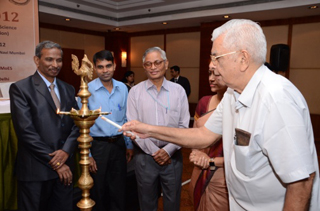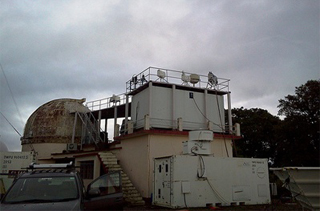Launch of the IASTA e-Bulletin
Aerosols play diverse roles in modulating the Earth's climate and impacting agriculture and human health. Aerosol research in India has grown manifold in the past few decades. Ground-based monitoring network has expanded, while several coordinated field campaigns were carried out, both over the Indian landmass and surrounding oceans, to understand the space-time variability of aerosol microphysical, chemical, optical and radiative properties. Observations by new generation satellites are increasingly used to complement the in-situ measurements. Climate models are being developed to incorporate aerosols for more accurate simulation of the atmospheric circulation and precipitation. New research initiatives are taken in emerging sub-areas such as nanoparticle science & technology and bio-aerosols in the country.
Besides some on-going intense aerosol observational programs, several national research initiatives were taken in the recent years. The "National Carbonaceous Aerosol Programme (NCAP)" was launched under the patronage of Ministry of Environment and Forest, Govt. of India to understand the role of carbonaceous particles in influencing the regional climate, precipitation pattern and Himalayan glaciers. One of the major
science objectives of the "Continental Tropical Convergence Zone (CTCZ)" programme under the auspices of Ministry of Earth Sciences, Govt. of India is to understand the role of aerosols in the variability of Indian monsoon through aerosol-cloud interaction. A national network programme on "Climate Change and Human Health" initiated by DST, Govt. of India identifies "Air Pollution" as one of the key thematic areas.
IASTA has been working towards promotion of aerosol science and technology in the country by way of organising conferences on topical themes, workshops and lectures; and publishing these proceedings as bulletins. To increase the frequency of these bulletins, it was decided by the General Body that the e-format may be adopted. Beginning with this issue, IASTA is launching the web-based version to encourage students, researchers and industry partners to send their contributions for the bulletin and hope that the new design will be reader-friendly.
Sagnik Dey
Editor, IASTA e-Bulletin
Foreword by IASTA President
 IASTA 2012 Conference: A Brief Report
IASTA 2012 Conference: A Brief Report
 Ganges Valley Aerosol Experiment (GVAX)
Air Pollution and Human Health
Forthcoming Events
Obituary
Ganges Valley Aerosol Experiment (GVAX)
Air Pollution and Human Health
Forthcoming Events
Obituary
Cover Image: MODIS image of haze over India and Bangladesh on 24th Jan 2013
Image Courtesy: MODIS Land Rapid Response Team, NASA GSFC





 Ganges Valley Aerosol Experiment (GVAX)
Ganges Valley Aerosol Experiment (GVAX)